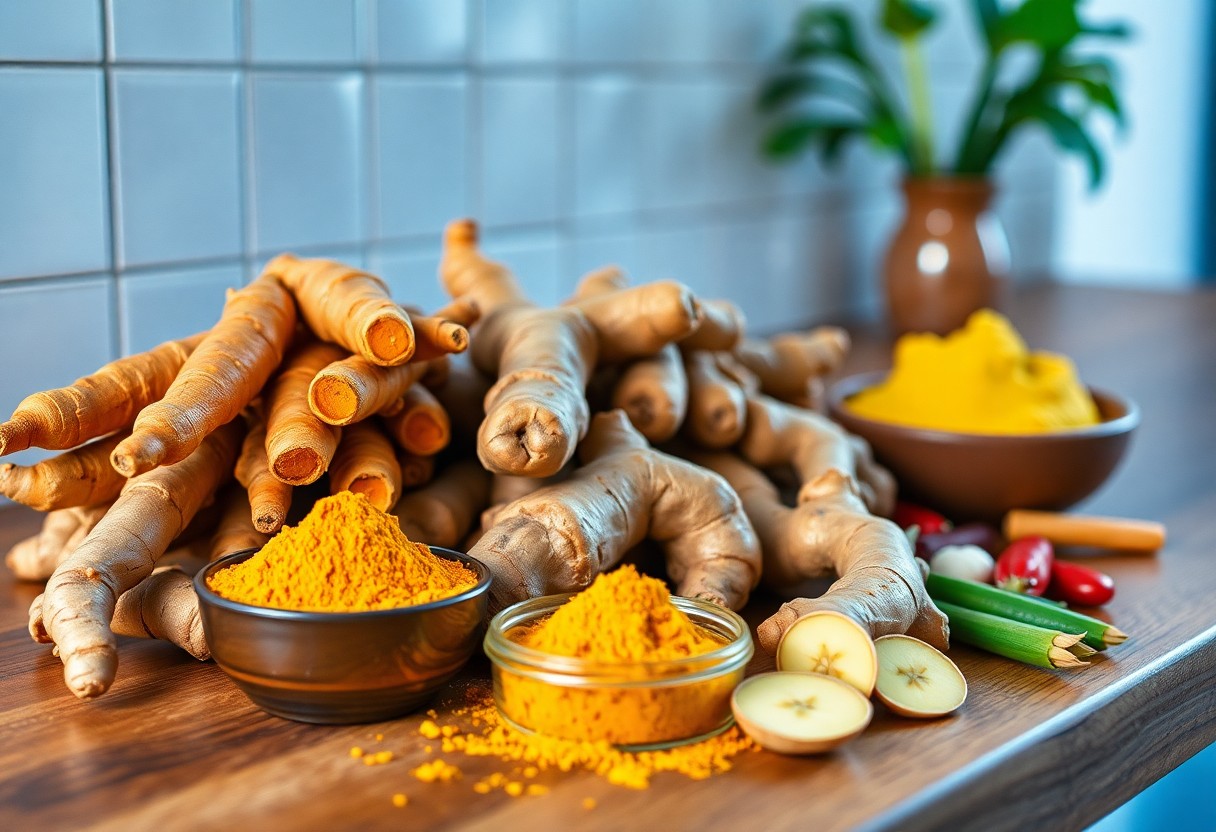Health & Society
The Benefits of Fasting – Exploring Time-Restricted Eating Patterns

Eating patterns are evolving, with many individuals turning to time-restricted eating as a means to enhance health and well-being. They find that this method of fasting offers numerous benefits, including improved metabolic health, weight management, and even mental clarity. Research indicates that such eating practices can lead to significant reductions in inflammation and lower risks of chronic diseases. As they explore these diverse fasting benefits, individuals are discovering how structured eating windows can transform their lifestyle and empower better health decisions.
Key Takeaways:
- Time-restricted eating can enhance metabolic health by improving insulin sensitivity and reducing blood sugar levels.
- Fasting patterns often lead to weight loss and fat loss while preserving lean muscle mass.
- Adopting time-restricted eating can potentially improve mental clarity and cognitive function.
- Fasting may promote autophagy, a process that helps the body remove damaged cells and regenerate healthier cells.
- Engaging in time-restricted eating schedules can foster better digestion and gut health by aligning eating patterns with the body’s natural circadian rhythms.
Understanding Fasting
Your understanding of fasting can greatly enhance the experience and benefits associated with it. Fasting, in its various forms, involves abstaining from food for specific periods, allowing the body to undergo metabolic changes that may promote health. Researchers have shown that fasting not only aids in weight maintenance but can also enhance cellular repair and improve overall health markers.
Definition of Time-Restricted Eating
At its core, time-restricted eating (TRE) is a dietary pattern where individuals consume food within a designated timeframe, typically ranging from 6 to 12 hours each day. Outside of this eating window, they refrain from consuming any calories, which allows the body ample time to transition into a fasting state and may lead to various health benefits.
Historical Context and Practices
Eating patterns that resemble modern fasting practices have been observed throughout history. Many ancient civilizations recognized the benefits of intermittent fasting, often incorporating periods of fasting into religious and cultural practices. For example, in various traditions, fasting was seen as a way to achieve spiritual clarity or as a method of detoxification. This awareness has only grown in recent years as modern studies have begun to validate the health benefits, such as improved metabolism and longevity, associated with these ancient practices.
This historical context highlights how fasting has been part of human culture for millennia, where it served not only as a means of survival during scarce periods but also as a method of ritual purification in many cultures. Over time, societies evolved, and although food availability increased, the awareness of fasting’s health benefits has persisted. Various religious groups, such as monks or practitioners of Hinduism, often recommended fasting to attain mental clarity and physical well-being. Today, knowledge from these traditions informs modern scientific studies, leading to a renaissance of interest in fasting and its potential health advantages.
Physiological Benefits of Fasting
It is well-documented that fasting can yield significant physiological benefits for individuals. By engaging in time-restricted eating patterns, they may enhance their health and well-being, as fasting initiates a host of metabolic changes, improves cellular repair processes, and promotes longevity. These effects not only help in weight management but also contribute to overall physiological resilience, aiding the body in adapting to various stressors over time.
Metabolic Effects
Metabolic changes induced by fasting include increased insulin sensitivity and enhanced fat oxidation. By reducing the frequency of meals, individuals allow their bodies to switch from using carbohydrates to mobilizing fat as an energy source. This transition effectively promotes weight loss and lowers the risk of metabolic diseases such as type 2 diabetes, making fasting an appealing strategy for those seeking to improve their metabolic health.
Cellular Repair and Autophagy
With fasting, the body initiates mechanisms of cellular repair and autophagy, a process that cleans out damaged cells and regenerates new ones. This state occurs when the body is deprived of food, prompting cells to recycle components, reduce oxidative stress, and eliminate dysfunctional cellular parts. Through fasting, individuals may thus support healthier aging and potentially extend their lifespan.
Hence, the activation of autophagy during fasting plays a vital role in maintaining cellular health. This process enables the body to remove debris from damaged cells, including protein aggregates and dysfunctional mitochondria, which can contribute to age-related diseases. By enhancing cellular repair mechanisms, fasting not only promotes improved cellular function but also fosters a healthier immune response, thereby reducing inflammation and lowering the risk of chronic illnesses. As a result, it is evident that incorporating fasting into one’s lifestyle can yield transformative health benefits.
Mental and Cognitive Benefits
Now, many individuals are increasingly discovering that fasting can significantly enhance mental and cognitive functions, promoting clarity and focus. Engaging in time-restricted eating patterns enables them to experience heightened alertness, decreased brain fog, and improved cognition. Scientific research supports the idea that fasting may facilitate various neurological processes, potentially leading to better overall brain health.
Enhanced Focus and Clarity
Against a backdrop of constant distractions, individuals often find that fasting sharpens their focus and enhances mental clarity. By limiting food intake to specific time frames, they can reduce fluctuations in energy levels and stabilize their concentration, allowing for more effective task completion and improved productivity.
Potential Neuroprotective Effects
Against the increasing prevalence of neurodegenerative conditions, research indicates that fasting may have neuroprotective effects. Individuals engaging in time-restricted eating often exhibit changes in brain chemistry that can minimize oxidative stress and inflammation. Effects observed include the promotion of neurogenesis and increased production of brain-derived neurotrophic factor (BDNF), which plays a vital role in neural health. Additionally, these individuals might experience a lower risk of developing disorders such as Alzheimer’s disease, making fasting an appealing option for those concerned about cognitive decline.
Weight Management and Obesity Prevention
Not only does time-restricted eating contribute to overall caloric reduction, but it also serves as a practical approach to weight management and obesity prevention. By limiting the window during which individuals can consume food, they often find themselves eating fewer calories, leading to effective weight loss strategies. This method promotes healthier food choices and encourages mindfulness around eating patterns, which can significantly impact long-term health outcomes.
Caloric Restriction and Weight Loss
Weight loss becomes attainable through a structured caloric restriction, as time-restricted eating helps individuals maintain a calorie deficit without the need for constant dieting. This practice encourages the consumption of nutrient-dense foods during eating windows, allowing for sustained energy levels and improved overall health.
Impact on Hormones and Appetite Regulation
Across various studies, time-restricted eating has shown positive effects on hormones that regulate hunger and metabolism. This method can improve insulin sensitivity, reduce levels of ghrelin (the hunger hormone), and elevate leptin (the satiety hormone), enabling individuals to experience fewer hunger pangs. As a result, he or she may feel more satisfied after meals, leading to a more balanced approach to eating.
Hence, this interplay between hormonal regulation and time-restricted eating can pave the way for healthier eating habits. With improved insulin sensitivity, individuals often experience fewer issues related to blood sugar spikes. Furthermore, a decrease in ghrelin allows for a reduced appetite, translating to better portion control. These physiological adjustments not only help in achieving weight loss goals but also play a vital role in preventing obesity over time, underscoring the importance of understanding how eating patterns can influence one’s health journey.
Fasting and Longevity
For many, the idea of fasting extends beyond weight loss to its potential role in enhancing lifespan. Studies suggest that time-restricted eating patterns may activate biological processes that promote cellular repair, reduce inflammation, and improve metabolic function, all of which are associated with increased longevity. As research expands, he or she may find that incorporating fasting practices could contribute positively to age-related health improvements.
Insights from Animal Studies
For researchers, animal studies have provided significant insights into the relationship between fasting and longevity. Experiments with rodents and other species indicate that caloric restriction and intermittent fasting can extend lifespan while improving health markers, such as insulin sensitivity and oxidative stress responses. These findings support the notion that fasting might mimic some effects of caloric restriction, promoting healthier aging.
Human Studies and Observational Evidence
For investigators, human studies and observational research reveal promising correlations between fasting practices and enhanced longevity. These studies suggest that individuals who engage in time-restricted eating may experience a lower risk of chronic diseases, such as heart disease and diabetes, thus potentially increasing lifespan. Furthermore, findings indicate a significant association between dietary habits, fasting frequency, and improved metabolic health.
Evidence from various human studies highlights that those practicing time-restricted eating often report benefits such as improved cardiovascular health, reduced obesity rates, and enhanced cognitive function, which may collectively contribute to a longer life. Observational studies demonstrate that participants adhering to consistent fasting regimens may experience a notable decline in age-related disease incidence. Importantly, as he or she considers these approaches, it is necessary to balance fasting with a nutritious diet, ensuring that the potential advantages are maximized while minimizing any adverse effects from inadequate nutrition.
Practical Approaches to Time-Restricted Eating
Despite the growing interest in time-restricted eating, individuals often need guidance on how to implement it effectively. Various practical approaches can help them structure their daily eating habits while accommodating their lifestyles. By understanding different patterns and developing a personalized schedule, they can benefit from the potential health and metabolic advantages offered by this dietary strategy.
Popular Methods and Timing
Below are some of the most popular methods and timings for time-restricted eating:
- 16/8 Method: Eating during an 8-hour window and fasting for 16 hours.
- 5:2 Diet: Regular eating for five days and restricting calorie intake for two non-consecutive days.
- Warrior Diet: Eating small amounts of raw fruits and vegetables during the day, followed by a substantial meal at night.
Tips for Successful Implementation
Behind every successful time-restricted eating routine lies thoughtful planning and preparation. Individuals can enhance their experience by following these guidelines:
- Choose a Comfortable Time Frame: Select a fasting schedule that matches personal lifestyle preferences.
- Stay Hydrated: Drinking water, tea, or coffee during fasting hours can help curtail hunger.
- Plan Balanced Meals: Focus on nutrient-dense foods during eating windows to support overall health.
Eating habits play a significant role in the success of time-restricted eating. Individuals should aim to incorporate plenty of whole foods while minimizing processed options. They can also experiment with their eating periods to find what works best. Additionally, being mindful of social gatherings and how they affect eating schedules can guide decision-making. Recognizing the importance of consistent patterns and staying committed can lead to a transformative approach toward their eating habits.
Final Words
Summing up, the exploration of time-restricted eating patterns reveals numerous benefits for health and well-being. He or she may experience improved metabolic function, weight management, and enhanced mental clarity through these fasting practices. They can also enjoy the simplicity of fewer meals, which may lead to better dietary choices. By embracing the diverse advantages of fasting, individuals can cultivate a holistic approach to health, aiding both physical and mental vitality in their everyday lives.
FAQ
Q: What is time-restricted eating?
A: Time-restricted eating is an eating pattern that involves limiting food intake to a specific window of time during the day. Typically, this method involves fasting for a certain number of hours—often 12 to 16 hours—and eating only during a designated period, such as an 8-hour window. This approach allows the body to create a natural rhythm and can enhance metabolic health.
Q: What are some of the primary benefits of fasting?
A: Fasting, particularly through time-restricted eating, has been associated with various health benefits. These include improved insulin sensitivity, weight management, and enhanced cellular repair processes. Moreover, fasting may also promote better mental clarity and emotional resilience, as well as support cardiovascular health by reducing inflammation and lowering blood pressure.
Q: How can time-restricted eating aid in weight management?
A: Time-restricted eating can assist with weight management by naturally limiting calorie intake. The reduced eating window typically leads to fewer opportunities for snacking and can help individuals make healthier food choices. Studies have shown that this approach may enhance fat loss while preserving muscle mass, making it a desirable method for maintaining a healthy weight.
Q: Are there any risks associated with fasting or time-restricted eating?
A: While time-restricted eating is generally considered safe for most individuals, it may not be suitable for everyone. People with certain medical conditions, such as diabetes or eating disorders, should consult with a healthcare professional before adopting this eating pattern. Additionally, some individuals may experience temporary side effects, such as hunger pangs, irritability, or energy fluctuations until their bodies adjust.
Q: How can someone get started with time-restricted eating?
A: To begin with time-restricted eating, individuals can choose a suitable eating window that aligns with their lifestyle—common options are 16:8 or 14:10 formats, meaning 16 or 14 hours of fasting followed by an 8 or 10-hour eating period. It is advisable to start gradually by shortening the eating window over time. Staying hydrated and focusing on nutrient-dense foods during the eating window can enhance the experience and promote better results.
Health & Society
Danish Youth Take Charge: A Drug-Free Future, One Shop at a Time

KINGNEWSWIRE – Press release // In the heart of Copenhagen, a group of 15 young activists—aged 10 to 20—are rewriting the narrative on youth empowerment and community health. Inspired by the principles of the Convention on the Rights of the Child and their faith in the Church of Scientology, these teens are spearheading a grassroots campaign to create a drug-free environment. Armed with educational booklets from The Truth About Drugs initiative, they’re turning local businesses into hubs of prevention, proving that age is no barrier to driving societal change.
From Booklets to Action: A Youth-Led Movement
Having started over a month, the group visits shops across Copenhagen, gaining the support of owners and shop assistants to display drug prevention materials at checkout counters. Their approach is simple but impactful: make critical information accessible to everyday customers, sparking conversations about the dangers of substance abuse. “They’re not just kids handing out flyers,” says Giulia, who guides them in this endeavor. “They are showing adults that they care about our future—and that they are taking responsibility for it.”
Their efforts align with global frameworks like the UN Convention on the Rights of the Child, which emphasizes youth participation in decisions affecting their lives. By engaging directly with businesses, the group embodies the spirit of some of UNICEF’s programs, which empowers young people to design solutions for community challenges. “These teens are bridging gaps between generations, ensuring their message resonates where it matters most” said Giulia, in charge of public affairs at the Church of Scientology in Denmark.
Tackling a Local Crisis with Global Lessons

Denmark has long grappled with youth drug use, particularly in areas like Copenhagen’s Freetown Christiania, where hash consumption reportedly remains prevalent. The group’s campaign addresses this head-on, mirroring strategies from what is done in other countries, and try to instil this to every other European country, combining education with community outreach to combat addiction before it arrives.
Their work also reflects a vision of supporting recovery and prevention, proving that empowerment starts long before crisis intervention. The program, one of the world’s largest non-state drug prevention initiatives, is fully funded by members of the Church of Scientology, inspired by L. Ron Hubbard’s research on drug prevention and rehabilitation. However, the teens emphasize the universal message of their materials: facts about drug risks, peer pressure, and making healthy choices “Our religion teaches us to serve others, and do it with factual information” says one of the participants, “this is about saving lives, not religious beliefs.”
A Model for Youth Agency Worldwide
The group’s initiative resonates with many international programs, by equipping young people to drive social change. By partnering with local businesses, this recently started Truth About Drugs youth group, is fostering a culture of collective responsibility. Their actions also echo WHO’s call for youth engagement in health advocacy, positioning them as allies in Denmark’s public health goals.
As these teens inspire shop owners and customers alike, they’re proving that meaningful youth participation isn’t a fairy tale. It’s a blueprint for building resilient communities—one booklet and one conversation at a time. “They are not waiting for permission to change the world,” says Ivan Arjona, Scientology’s representative to the European Union and the UN “They are already doing it.”
Health & Society
The Magic of Mushrooms – Exploring Their Nutritional and Healing Powers

Many people are fascinated by the world of mushrooms, captivated by their remarkable nutritional benefits and therapeutic properties. He, she, and they often overlook the fact that some species can be highly toxic, while others have the potential to boost immunity and act as natural remedies. By delving into the myriad varieties and their unique qualities, individuals can uncover how mushrooms not only enhance culinary experiences but also promote overall health and well-being. This exploration highlights both the magic and mystery of these fungal wonders.
Key Takeaways:
- Mushrooms are rich in imperative nutrients, including vitamins, minerals, and antioxidants that support overall health and well-being.
- Certain varieties of mushrooms have been linked to immune system support, potentially enhancing the body’s ability to fight infections and diseases.
- Some mushrooms, such as reishi and lion’s mane, are known for their adaptogenic properties, helping the body adapt to stress and improve mental clarity.
- Incorporating mushrooms into a balanced diet can contribute to a variety of health benefits, such as improved digestion and heart health.
- Research is ongoing into the potential therapeutic effects of mushrooms, with some studies suggesting benefits for mental health, including anxiety and depression management.
Nutritional Benefits of Mushrooms
While many people overlook mushrooms as a mere side dish, their nutritional benefits are remarkable. They serve as a low-calorie source rich in necessary nutrients, providing a variety of dietary fibers, proteins, and carbohydrates. Additionally, mushrooms are known to support immune function and may improve overall health by contributing to balanced nutrition. As he or she incorporates mushrooms into their diet, they may find a plethora of health benefits waiting to be discovered.
Essential Vitamins and Minerals
Benefits of mushrooms include their high content of necessary vitamins and minerals, which plays a significant role in overall health. They are sources of Vitamin D, potassium, selenium, and B vitamins, all of which contribute to various bodily functions such as immune support and energy production. Including mushrooms in diet may help individuals meet their nutritional needs without excessive calorie intake.
Antioxidant Properties
Vitamins within mushrooms not only nourish the body but also play a significant role in combating oxidative stress. Antioxidant properties found in mushrooms help mitigate damage caused by free radicals, which can lead to chronic illnesses and accelerated aging. The presence of ergothioneine and glutathione in various mushroom species further enhances their ability to protect cells from oxidative damage. Emphasizing the importance of these antioxidants, individuals can see how incorporating mushrooms into their meals promotes better health and longevity.
The unique combination of antioxidants in mushrooms, particularly ergothioneine, provides significant protection against oxidative stress and inflammation. Studies have shown that they can neutralize harmful free radicals, promoting cellular health and reducing the risk of chronic diseases such as heart disease and cancer. By regularly consuming mushrooms, he or she can harness these protective effects, making a positive impact on their well-being. Thus, mushrooms stand out as a powerful ally in the pursuit of optimal health.
Healing Powers of Medicinal Mushrooms
Clearly, the world of medicinal mushrooms offers profound benefits for holistic health. These fungi, rich in bioactive compounds, have gained attention for their potential in supporting healing processes within the body. From boosting immunity to combating inflammation, medicinal mushrooms serve as nature’s remarkable remedy, appealing to those seeking natural alternatives to traditional medicine.
Immune System Support
On their journey towards improved health, many individuals turn to medicinal mushrooms for their ability to enhance immune system function. Varieties like reishi and shiitake contain polysaccharides, which are known to stimulate immune response, helping the body defend against infections and diseases effectively. Their adaptogenic qualities further assist the body in managing stress, which can negatively impact immune health.
Anti-Inflammatory Effects
Systematic inflammation can lead to a variety of health issues, and medicinal mushrooms provide a natural solution. They are rich in compounds that exhibit anti-inflammatory properties, which can significantly reduce inflammation throughout the body. Studies have suggested that mushrooms like cordyceps and turkey tail help modulate inflammatory responses, potentially alleviating symptoms related to chronic conditions such as arthritis and other inflammatory diseases.
Anti-inflammatory properties in these mushrooms arise from their active compounds, including triterpenes and beta-glucans. These components effectively inhibit pro-inflammatory cytokines, reducing swelling and discomfort. By including medicinal mushrooms in their diets, individuals may experience enhanced recovery from inflammation-driven health issues, showcasing their potential role as a complementary approach in managing inflammatory conditions. They can significantly contribute to overall wellness and resilience, allowing individuals to maintain a healthier lifestyle.
Types of Mushrooms and Their Uses
Now, understanding the different types of mushrooms and their uses can enhance culinary and medicinal practices. Each mushroom type offers unique flavors and health benefits:
| Type | Uses |
| Button Mushroom | Culinary, rich in nutrients |
| Shiitake | Dietary supplement, immunity booster |
| Reishi | Stress relief, traditional medicine |
| Oyster Mushroom | Culinary, good source of protein |
| Chaga | Antioxidant, anti-inflammatory |
This understanding is key to unlocking the extensive benefits of mushrooms in daily life.
Culinary Mushrooms
Mushrooms offer a variety of flavors and textures that elevate countless dishes. Popular options like cremini and portobello are often used in gourmet cooking, while others like shiitake and oyster provide distinctive tastes that enhance soups, stir-fries, and sauces. Their versatility and nutritional value make them important ingredients in both vegetarian and meaty cuisines.
Medicinal Mushrooms
Medicinal mushrooms provide numerous health benefits that can support wellness. Some prominent types include turkey tail, known for its immune-boosting properties, and chaga, celebrated for its antioxidant effects. With a rising interest in natural remedies, these mushrooms have gained popularity for their immune, cognitive, and anti-inflammatory benefits.
At the forefront of natural healing, she highlights that while many medicinal mushrooms offer tremendous advantages, he cautions against some varieties that can be toxic. For instance, the Amanita muscaria mushroom can lead to severe health complications, underscoring the importance of proper identification. On the positive side, mushrooms like Lion’s Mane are celebrated for enhancing cognitive function and reducing anxiety. They serve as potent tools for those seeking holistic health solutions.
Incorporating Mushrooms into Your Diet
Once again, incorporating mushrooms into one’s diet can enhance overall health while adding unique flavors to a variety of meals. He or she can sauté them, add them to salads, or use them as a meat substitute in various recipes, tapping into their rich nutritional profile. Whether fresh, dried, or powdered, they can be effortlessly blended into everyday dishes. Consider making a habit of including these versatile fungi to reap their numerous benefits for heart health and immunity.
Culinary Tips and Recipes
Between experimenting with different types of mushrooms, such as portobello or shiitake, he or she can discover their diverse culinary applications. Here are some quick tips:
- Use fresh mushrooms in pasta dishes for added texture.
- Incorporate dried mushrooms into soups for depth of flavor.
- Try mushroom powders as a seasoning for a savory kick.
- Consider stuffed mushrooms as a delicious appetizer.
After exploring various recipes, they will find endless possibilities to enjoy mushrooms while benefiting from their health advantages.
Supplements and Extracts
Across the world, mushroom supplements and extracts are gaining popularity for their potential health benefits. He or she may consider using these offerings, such as reishi, lion’s mane, or cordyceps, which are linked to improved cognitive function, stamina, and immune support. Importantly, they should consult a healthcare professional before incorporating these into their regimen to avoid potential interactions with medications or existing health conditions, ensuring a safe and effective experience.
This exploration of mushroom supplements reveals that while many find them beneficial for enhancing overall wellness, one must also be aware of the possible side effects they could encounter. As with any supplement, it is vital to choose high-quality products from reputable sources. Caution is warranted since some mushrooms can also be toxic, leading to serious health risks if not properly identified or harvested. Ultimately, he or she should approach mushroom supplementation thoughtfully to embrace the positive effects while being mindful of safety.
Safety and Precautions
After understanding the benefits of mushrooms, it’s vital for individuals to prioritize safety and precautions when incorporating them into their diet or wellness routines. Correct identification and knowledge of potential risks can prevent adverse effects, ensuring they enjoy the beneficial properties of these fungi without unnecessary harm.
Identifying Edible Mushrooms
Along their journey to explore mushrooms, individuals must become adept at identifying edible varieties. Familiarizing oneself with local species and consulting reputable field guides or experts can significantly reduce the risk of consuming toxic mushrooms. Proper identification is key to enjoying the nutritional and healing benefits mushrooms offer.
Potential Allergies and Interactions
Among the numerous benefits of mushrooms, individuals should be aware of potential allergies and interactions that could arise. These can vary from mild discomfort to severe reactions, depending on the person’s unique sensitivities.
Considering the diverse range of mushroom species, it is important for individuals to be vigilant about potential allergies and interactions. Some individuals may experience allergic reactions, which can manifest as gastrointestinal distress or skin irritations. Additionally, mushrooms can interact with certain medications, such as anticoagulants, increasing the risk of adverse effects. To safeguard health, consulting a healthcare professional before introducing new mushroom varieties into the diet is highly advisable, particularly for those with existing health conditions or medications.
Future Research and Discoveries
Unlike conventional foods, mushrooms hold vast potential waiting to be unlocked through further research. He and she recognize that ongoing studies may unearth new nutritional benefits and therapeutic applications, especially in treating conditions such as depression and anxiety. They also caution that while many mushrooms boast healing properties, others can be toxic or harmful. Continued exploration into the complex ecosystems of fungi may lead to groundbreaking discoveries in medicine, agriculture, and sustainability, cementing mushrooms as a vital focus for future research endeavors.
Summing up
The exploration of mushrooms reveals their remarkable nutritional and healing properties, showcasing their roles in enhancing immune function and promoting overall well-being. They provide imperative vitamins, minerals, and antioxidants that benefit health, while certain varieties exhibit potential medicinal qualities that have intrigued researchers. By incorporating mushrooms into their diets or utilizing them in various health remedies, individuals can harness the full spectrum of benefits these natural wonders offer. Thus, she, he, and they can appreciate the magic of mushrooms in fostering a healthier lifestyle.
FAQ
Q: What are the nutritional components of mushrooms?
A: Mushrooms are low in calories and fat while being a good source of important nutrients. They contain a variety of vitamins such as B vitamins (including riboflavin, niacin, and pantothenic acid), vitamin D, and antioxidants. Additionally, mushrooms are rich in minerals such as selenium, potassium, and copper. Their fiber content can also aid in digestion.
Q: How can mushrooms contribute to a healthy diet?
A: Incorporating mushrooms into your diet can enhance overall health due to their nutritional density. They can help improve heart health by lowering cholesterol levels and supporting blood pressure control. The antioxidants in mushrooms can protect the body from oxidative stress, and their fiber can promote digestive health. Plus, their savory flavor can enhance meals without adding excessive calories.
Q: What are some medicinal properties of certain mushroom species?
A: Various mushroom species are recognized for their potential health benefits. For example, reishi mushrooms are often associated with boosting the immune system, while lion’s mane has been studied for its effects on cognitive function and nerve health. Shiitake mushrooms may have cholesterol-lowering properties, and maitake mushrooms are believed to have potential anti-cancer effects. However, these effects are often based on preliminary research, and further studies are needed.
Q: Are there any risks associated with consuming mushrooms?
A: While many mushrooms are safe and nutritious, some can be toxic or cause allergic reactions. It’s important to only consume mushrooms that have been properly identified and sourced from reliable suppliers. Wild mushrooms should not be consumed unless you are trained to identify edible varieties, as some can be life-threatening. Additionally, individuals with specific allergies or sensitivities should approach mushroom consumption cautiously and consult a healthcare professional if needed.
Q: How can I incorporate more mushrooms into my meals?
A: There are numerous ways to add mushrooms to your diet. You can sauté them as a side dish, include them in soups and stews, or toss them in salads for added texture. Mushrooms can also be used as a meat substitute in dishes like burgers or tacos, and they work well in stir-fries and pasta dishes. Experimenting with different mushroom varieties can bring diverse flavors and textures to your meals.
Health & Society
Spice Up Your Life – The Health Benefits of Turmeric, Ginger, and More

With an increasing focus on natural remedies, he, she, and they are discovering the remarkable health benefits of spices like turmeric and ginger. These powerful ingredients not only add flavor to meals but also support overall well-being through their anti-inflammatory and antioxidant properties. Incorporating these spices into daily diets can lead to improved digestion and enhanced immune function. Furthermore, they may help reduce the risk of chronic diseases, making it necessary for health-conscious individuals to explore the potent benefits offered by these culinary treasures.
Key Takeaways:
- Turmeric contains curcumin, a powerful anti-inflammatory compound that may help reduce inflammation and support joint health.
- Ginger is known for its digestive benefits, including alleviating nausea and improving digestive efficiency.
- Both turmeric and ginger possess antioxidant properties, which can help combat oxidative stress in the body.
- Incorporating these spices into your diet may enhance overall immune function and promote better health.
- Experimenting with various recipes can make it easier to include turmeric, ginger, and other beneficial spices in daily meals.
The Power of Turmeric
As one of the most celebrated spices in traditional medicine, turmeric carries significant health benefits that can enhance overall well-being. Its vibrant yellow color and warm flavor make it a popular addition to various dishes, but especially its potential to improve health makes it a staple in many households. By including turmeric in their diet, individuals may experience its numerous therapeutic effects, transforming not only the flavor of meals but also potentially their health.
Curcumin: The Active Compound
About thirty percent of turmeric’s content is made up of curcumin, its primary bioactive compound. Curcumin is responsible for most of turmeric’s health-promoting properties, including its antioxidant and anti-inflammatory effects. This means that when someone incorporates turmeric into their diet, they are primarily benefiting from curcumin’s remarkable ability to support various bodily functions.
Anti-Inflammatory Properties
On the topic of inflammation, curcumin is known for its powerful anti-inflammatory properties, which may help in reducing chronic inflammation linked to many health issues. Studies reveal that curcumin inhibits several molecules involved in inflammation, explaining its competency in treating conditions like arthritis and other inflammatory diseases.
At the same time, they should be aware of the potential of curcumin to combat inflammation on a molecular level. Individuals suffering from chronic inflammation may find that incorporating turmeric into their diet can help alleviate symptoms and improve their health. Regular consumption may support immune function, reduce joint pain, and promote overall wellness, making it an imperative spice to consider for those looking to enhance their health naturally.
The Benefits of Ginger
If someone is looking to enhance their health naturally, ginger is a remarkable addition to their diet. This spicy root has been celebrated for centuries for its medicinal properties, offering a variety of health benefits that range from digestive support to powerful anti-inflammatory effects.
Digestive Health
Among the many advantages of ginger, its ability to promote digestive health stands out. This spice can help alleviate common gastrointestinal issues, such as bloating and indigestion, by encouraging efficient digestion and soothing the stomach lining.
Anti-Nausea Effects
Besides its digestive benefits, ginger is well-known for its anti-nausea effects, particularly in cases of motion sickness and morning sickness.
This natural remedy is often recommended to pregnant women and travelers alike. Research has shown that consuming ginger can significantly reduce nausea and vomiting, providing relief for those who experience these discomforts. Furthermore, it can be more effective than some over-the-counter medications, making it a safer alternative for many. Incorporating ginger into one’s diet through teas, capsules, or fresh root can help mitigate feelings of unease, offering a simple yet effective solution for those in need.
Other Healing Spices
All spices possess unique properties that contribute to overall health and wellness. Many of these ingredients not only enhance flavor but also offer an array of potential benefits. From anti-inflammatory effects to blood sugar regulation, incorporating various spices into daily diets can be an easy way for individuals to boost their health naturally.
Cinnamon and Blood Sugar Control
Above all, cinnamon has been known to play a significant role in managing blood sugar levels. Studies suggest that this aromatic spice can improve insulin sensitivity, making it a valuable ally for those struggling with diabetes or prediabetes. As many individuals seek natural ways to maintain their health, cinnamon offers a simple yet effective option.
Garlic and Heart Health
With its potent properties, garlic has earned a reputation for promoting heart health. This flavorful bulb is associated with lower blood pressure and reduced cholesterol levels, making it a powerful addition to any heart-friendly diet.
Indeed, garlic contains active compounds such as allicin, which contribute to its heart-protective effects. Studies indicate that regularly consuming garlic may help lower blood pressure and reduce LDL cholesterol levels, both of which are significant risk factors for heart disease. Moreover, garlic’s antioxidant properties can help protect the cardiovascular system from damage. By integrating garlic into their diets, individuals may lower their risk of heart-related conditions while enjoying its unique flavor and versatility.
Incorporating Spices into Your Diet
Unlike many common condiments, spices such as turmeric, ginger, and others can elevate meals not just in flavor, but also in health benefits. They can be added to a variety of dishes, including soups, stews, and smoothies, allowing for a seamless integration into one’s daily eating habits. Individuals seeking to enhance their culinary experience should consider not only the taste but also the nutritional advantages these spices offer.
Cooking Tips and Techniques
At home, incorporating spices into meals can be simplified with a few techniques.
- Start with a base of warmed oil to activate necessary oils in spices.
- Use freshly ground spices for more potent flavor and health benefits.
- Experiment with combining spices to create unique blends that suit personal taste.
This enhances the overall culinary experience.
Creative Recipes
Spices can transform simple recipes into gourmet creations. They can be included in everything from marinades to desserts, highlighting their versatility. They encourage cooks to experiment with diverse culinary traditions.
Due to their vibrant flavors, spices invite creativity in the kitchen, enabling individuals to craft dishes that not only taste great but also offer health benefits. For example, a ginger-infused smoothie can brighten up breakfast, while a turmeric curry can serve as a hearty dinner option. She may also explore spice blends, such as Garam Masala or Ras el Hanout, to achieve a global flair. Importantly, they should be mindful of the balance between flavors to promote a pleasant taste experience.
Potential Risks and Considerations
For those considering adding turmeric, ginger, or other spices to their diet, it’s imperative to be aware of potential risks and considerations. While these spices are generally safe for most people, some individuals may experience side effects or interactions, depending on their unique health conditions and medications. Consulting a healthcare professional before incorporating large amounts of these spices can help avoid any adverse effects.
Allergies and Sensitivities
Considerations around allergies and sensitivities are important when introducing new spices into one’s diet. Some individuals may have allergic reactions to turmeric, ginger, or other similar spices, leading to symptoms such as skin irritations or gastrointestinal issues. She should monitor her body’s response when trying these spices and seek medical advice if any adverse reactions occur.
Interactions with Medications
Around the topic of interactions with medications, it is advisable for individuals who take prescription or over-the-counter drugs to be cautious with turmeric and ginger. Turmeric, in particular, may enhance the effects of anticoagulants, increasing the risk of bleeding. Ginger can also affect certain medications, including blood thinners and antidiabetic drugs. It is imperative for individuals to consult their healthcare professional if they are on medications, ensuring that any spice additions do not lead to negative interactions.
It is vital for individuals to recognize that while spices like turmeric and ginger offer numerous health benefits, they can interfere with medication stability and efficacy. Specifically, patients on blood thinners or other medications affecting clotting may face heightened risks of bleeding when consuming turmeric. Additionally, those managing diabetes might notice altered blood sugar levels due to ginger’s potential effects on insulin. Therefore, a thorough discussion with a healthcare provider can provide guidance tailored to personal health needs, promoting both safety and effectiveness in dietary changes.
Summary of Health Benefits
Not only do turmeric and ginger offer vibrant flavors, but they also provide numerous health advantages. They contain anti-inflammatory properties that can alleviate chronic pain and improve joint health. Additionally, these spices are rich in antioxidants, promoting better immune function and reducing oxidative stress. Emerging studies suggest that they may even play a role in cancer prevention and heart health due to their ability to improve circulation and lower cholesterol levels. Incorporating turmeric and ginger into one’s diet can be a simple yet effective way for individuals to enhance their overall well-being.
To wrap up
Summing up, individuals seeking to enhance their well-being can greatly benefit from incorporating spices like turmeric and ginger into their diets. They possess powerful anti-inflammatory and antioxidant properties that can support immune function and overall health. By exploring the myriad ways these spices can be integrated into daily meals, they can not only enjoy a flavorful culinary experience but also support their body’s resilience and vitality. Thus, embracing these spices is a simple yet effective approach to fostering better health and wellness.
Q: What are the primary health benefits of turmeric?
A: Turmeric is known for its anti-inflammatory and antioxidant properties, primarily due to its active compound, curcumin. It may help reduce symptoms of arthritis, improve brain function, and lower the risk of heart disease. Many studies suggest that curcumin can also help boost the immune system and may support digestive health.
Q: How does ginger contribute to overall wellness?
A: Ginger is often used to alleviate nausea and is effective in reducing symptoms of motion sickness and morning sickness in pregnant women. In addition, it has anti-inflammatory properties and can aid digestion. Some studies suggest that ginger may also have potential benefits in managing blood sugar levels and reducing muscle pain after exercise.
Q: Are there any side effects associated with consuming turmeric and ginger?
A: While both turmeric and ginger are generally safe when consumed in moderation, they can cause side effects in some individuals. High doses of turmeric may lead to digestive issues, such as diarrhea or stomach upset. Ginger, when taken in large amounts, can also cause heartburn or diarrhea. It is always advisable to consult a healthcare professional if you have any concerns about adding these spices to your diet.
Q: Can turmeric and ginger enhance immune function?
A: Yes, both turmeric and ginger are known to support the immune system. Turmeric’s curcumin has been shown to enhance the body’s immune response while possessing antibacterial and antiviral properties. Ginger also boosts immunity through its antioxidant content and can help the body fight off infections, making these spices beneficial additions to a health-conscious diet.
Q: How can I incorporate turmeric and ginger into my daily meals?
A: There are various ways to add turmeric and ginger to your diet. You can use turmeric in cooking, such as in curries, soups, and rice dishes. Ginger can be grated into smoothies, added to teas, or used in stir-fried dishes. Both spices can also be found in supplement forms if fresh or powdered versions are not convenient for you. Experimenting with different recipes will help you find your preferred methods of consumption.
-

 EU & the World6 days ago
EU & the World6 days agoInnam Dustgir’s Approach to Public Relations
-

 Health & Society5 days ago
Health & Society5 days agoCold Showers and Beyond – Embracing Temperature Therapy for Vitality
-

 Politics4 days ago
Politics4 days agoEU’s cohesion policy: Council sets out clear guidelines for the future
-

 Politics5 days ago
Politics5 days agoEU supports the EU wine sector to cope with market uncertainties
-

 Politics6 days ago
Politics6 days agoEU pledges €3.4 billion to combat global malnutrition
-

 Health & Society4 days ago
Health & Society4 days agoNatural Sleep Solutions – Creating a Restorative Nighttime Routine
-
Travel7 days ago
‘We expect respect’: Bali cracks down on ‘naughty’ tourists with strict new rules
-

 EU & the World5 days ago
EU & the World5 days agoIs Bank of America Canceling Accounts? What to Know About Their Requirements

















